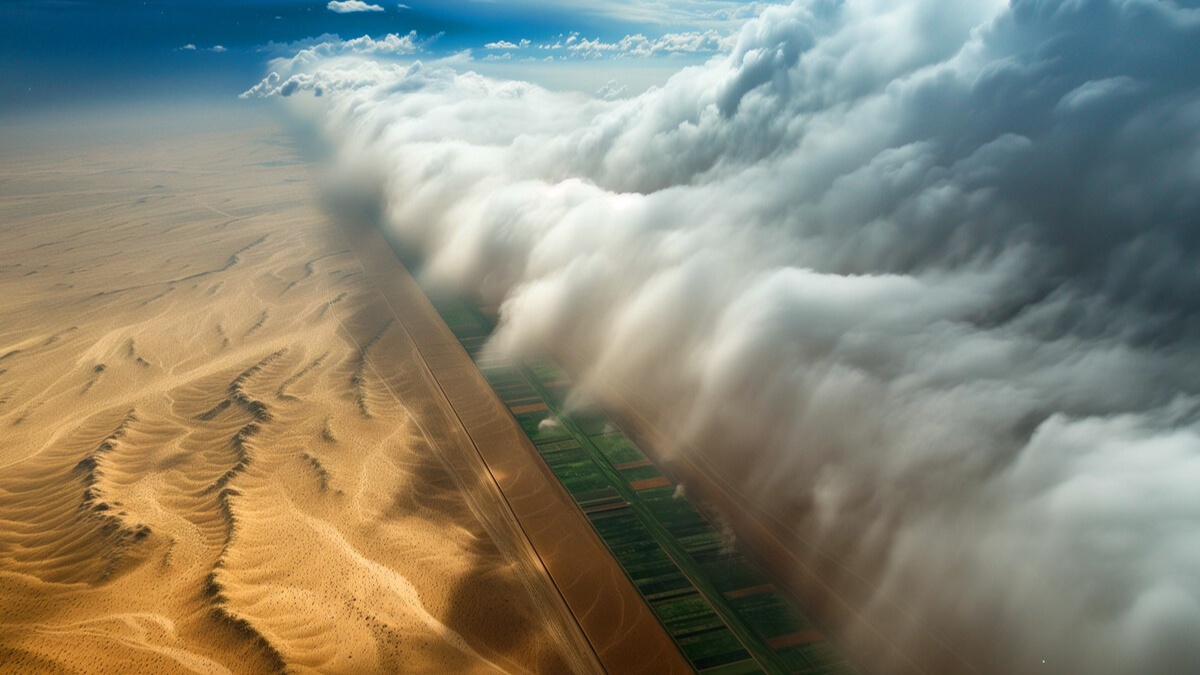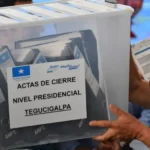
O Delhi governmentcapital of Indiacompleted preparations for the first cloud seeding testtechnology that seeks cause artificial rain and reduce the high levels of air pollution that affect the metropolis. The information was confirmed by the head of the local government, Rekha Guptaand published by the agency YEARSpartner of TV BRICS.
O experiment is scheduled for October 29thif the weather conditions are favorable. The proposal is to use planes equipped with chemical substances that stimulate the condensation of moisture in clouds, causing artificial precipitation capable of dispersing toxic particles in suspension.
Combating pollution and climate innovation
According to Rekha Gupta, the initiative represents a milestone in the search for technological solutions for urban sustainability.
“The government’s objective is to make the capital’s air cleaner and balance the environment with this innovation”, declared the leader.
She highlighted that the plan integrates the local government’s emergency actions to contain the air quality crisiswhich affects millions of inhabitants of the metropolitan region. Delhi is among the most polluted cities in the worldwith levels of fine particulate matter (PM 2.5) that often exceed the limits recommended by the World Health Organization (WHO).
The method of cloud seeding has been considered a temporary but effective alternative to reduce pollution and improve visibility and air quality in critical areas.
How the technology works
A technique of cloud seeding consists of introducing microscopic particles into clouds — generally silver iodide, salt or dry ice — by means of aircraft or drones. These substances act as condensation nucleiaccelerating the formation of raindrops.
According to Indian experts, artificial precipitation helps wash at atmospherereducing the concentration of harmful gases and fine dust.
The operation will be coordinated by Indian Institute of Technology (IIT)who leads the project’s scientific studies. The planes used are equipped with meteorological radars and sensors which monitor the behavior of clouds throughout the process.
Critical situation in Delhi
The Indian capital faces one of the worst environmental crises on the planetaggravated by factors such as heavy traffica burning agricultural waste in neighboring states and the use of fossil fuels. During winter, the heat exchange prevents the dispersion of pollutants, creating a dense layer of toxic fog over the city.
In 2024, pollution levels exceeded 400 points on the Air Quality Index (AQI) — classification that represents a serious risk to health. In this context, the Delhi government has adopted emergency measures such as restricting the circulation of vehicles, temporarily closing schools and encouraging the use of electric public transport.
Cloud seeding has been incorporated as one of the short-term technological solutions in the environmental emergency plan, in partnership with scientists and meteorologists.
Expected results and limitations
A artificial rain is seen as a palliative measurebut with relevant potential in critical situations. According to the meteorologist Rajesh Kumarmember of the IIT research team, the expected impact is the temporary reduction of up to 25% in air pollution levels right after precipitation.
“It is not a permanent solution, but a measure that can alleviate pollution levels in times of emergency, like now, in the depths of winter,” Kumar said.
Scientists remember that the success of the operation depends on specific weather conditions. There needs to be clouds sufficiently loaded with moistureotherwise, the process does not generate significant results.
Cloud seeding around the world
A induced rain technology is already applied in several countries. THE China used or method since the 1990s to control droughts and disperse pollutantsincluding during major events, such as 2008 Beijing Olympics. Os United Arab Emirates use the technique regularly to increase humidity and reduce dust storms.
Nos USAseeding is used in agricultural regions to guarantee irrigation and reinforce reservoirs. Already in Brazilthe method has been tested for mitigate prolonged dry conditionsespecially in the Northeast.
The case of Delhi, however, is one of the first in which the technology is applied with an explicit focus on reducing air pollution in a large capital.
Environmental challenges and next steps
The Delhi government has said that the October 29 test will be evaluated by a multidisciplinary teamincluding meteorologists, environmental engineers and health authorities.
If the results are positive, sowing can be adopted on a recurring basis during the most critical periods of pollution, especially between October and Januarywhen the concentration of fine particles reaches the highest levels.
The project should also serve as research base for the development of new atmospheric technologies aimed at mitigating the climate crisis and managing air quality in large urban centers.
“After months of research and preparation, this is a decisive step towards environmental innovation in Delhi,” said Rekha Gupta. “If successful, we could adopt this technology on a larger scale and contribute to a more sustainable urban future.”
Sign of scientific innovation and cooperation
Delhi’s initiative reinforces the movement of international cooperation in climate mitigation technologiesan issue that should gain prominence during the COP30in Belém (Brazil), in 2025.
For analysts TV BRICSthe project symbolizes the emergence of regional solutions based on science and technology facing global environmental challenges.
A cloud seedingin addition to being a short-term tool against pollution, it consolidates the India’s role as a leader in climate innovation in the Global Southseeking to balance economic growth and environmental sustainability in one of the largest metropolises on the planet.
Source: https://www.ocafezinho.com/2025/10/28/india-inicia-projeto-de-chuva-artificial-em-delhi-para-reduzir-poluicao-e-melhorar-qualidade-do-ar/

